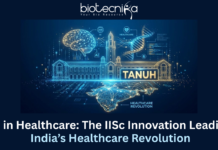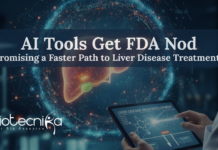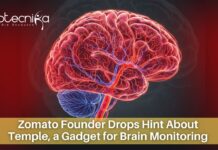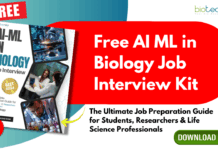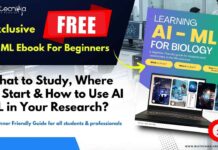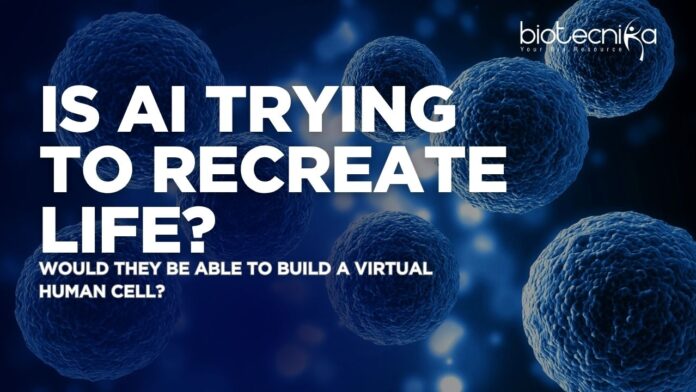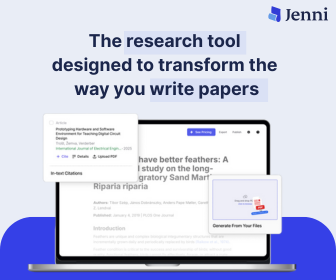Table of Contents
How AI Is Trying to Recreate Life: The Race to Build a Virtual Human Cell
Imagine zooming into a single human cell which is a microscopic universe of crowded molecules, folded proteins, and molecular machines performing millions of tasks every second. One small mistake, and it could cause a disease.Accurate modeling of cells is mainly required to know the root causes of diseases. Imagine, what if we could recreate the same universe through a computer?
That’s the dream behind the “virtual human cell,” and AI companies are racing to make it a reality.
From Fantasy to Possibility
15 years back, the idea of creating a complete computer model of a human cell sounded impossible. Graham Johnson, a computational biologist, recollects people laughing at this very thought. The advances in AI, massive biological datasets, and advanced imaging have made this vision into a reality. YES, it’s now possible.
Tech and biotech giants like Google DeepMind, the Chan Zuckerberg Initiative (CZI), and the Arc Institute are all investing heavily in virtual cells. The goal is to understand how cells function, how diseases develop, and how drugs interact with them, all digitally.
What Is a Virtual Cell?
Think of it as Google Earth for biology. Some scientists imagine an interactive 3D cell you can inspect, clicking on organelles and watching reactions happen. Others view it as an AI system that predicts outcomes, such as, “What happens if this protein fails?”
Traditionally, researchers built mathematical models of cells. But these turned out being slow and limited. AI can now learn directly from huge datasets, uncovering patterns and predicting cellular behavior without the need for manual equation writing.
Stephen Quake of Stanford says:
“You build models that learn directly from data, rather than trying to write down equations.”
In one experiment, AI trained on 12 species forecasted behaviors of species it never even saw – even uncovering relationships between cell types that scientists never noticed.
Why It Matters
A virtual cell could transform medicine and biology:
- It can quicken Drug Discovery – testing thousands of compounds technologically.
- Understanding Diseases – seeing how cancer or Alzheimer’s develops from the molecular level.
- Personalized Treatment can be Developed – predicting how the cells responds to therapy.
- Smarter Science – conducting experiments before touching a real cell.
- Universal Biological Representation – From molecules to whole cellular systems, virtual cells can produce detailed models that accurately depict biological elements at various scales.
- Predictive Power: They eliminate the need for expensive and time-consuming laboratory tests by enabling researchers to conduct in silico studies to forecast how cells will react to modifications, medications, or mutations.
- Interpretable Insights: Rather than only producing black-box forecasts, AI Virtual Cells can offer explanations for cellular actions through the use of Virtual Instruments.
Large-scale hypothesis testing is made possible by virtual cells, which let scientists test several theories at once, facilitating quicker repetition and the finding of fresh biological insights. Quake envisions overturning biology from 90% lab work to 90% computational work.
The Challenge
The obstacle is the “black box” problem: many AI models give forecasts without explanations. Scientists like Erick Armingol worry that this limits their practicality for basic research. CZI’s Karaletsos emphasizes the need for AI that explains its reasoning, rather than predicting.
The Road Ahead
Creating a complete virtual cell cannot happen overnight – experts say it may take a decade for the creation. But which once sounded like science fiction is now becoming a global scientific chase. For Johnson, the dream of seeing life’s machinery unfold digitally is finally believable.
“I no longer feel like a lunatic talking about this,” he says.
The race to build a virtual human cell is not just about AI, it’s about understanding life in whole itself. And if we succeed, we could witness the deepest secrets of biology – all digitally. Hope this idea soon turns out to be a reality.

